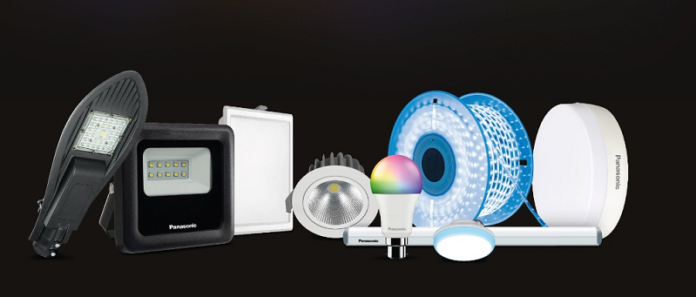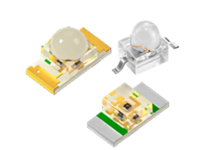
In the dynamic world of lighting technology, LED lighting has emerged as a game-changer, offering innovative solutions that blend efficiency, sustainability, and versatility. As traditional lighting methods become a thing of the past, LEDs are paving the way for a brighter future with significant benefits for both users and the environment.
Whether you’re illuminating your home, office, or a large industrial space, understanding the distinct advantages and applications of LED technology is crucial. In this comprehensive guide, we will explore the uniqueness of LEDs, their extensive applications, and how to make informed choices to ensure your lighting needs are met with efficiency and style.
What Makes LED Lighting Unique?
The uniqueness of LED lighting lies primarily in its energy efficiency. LEDs consume significantly less power than incandescent and fluorescent bulbs, which can drastically reduce electricity bills and contribute to a more sustainable environment. One of the biggest advantages of LEDs is their longevity; these lights can last up to 25 times longer than traditional incandescent bulbs, meaning fewer replacements and reduced waste.
In terms of environmental impact, LEDs are mercury-free and fully recyclable, making them a safer choice for the planet. Additionally, LEDs emit very low heat, enhancing safety for prolonged use and helping reduce cooling costs in various environments.
Applications of LED Lighting
1. Residential Lighting
LEDs have become the go-to choice for residential lighting due to their customizable brightness and warm tones that enhance comfort and mood. For instance, LED lights for bedroom spaces can create a soothing environment that can be ideal for relaxing at the end of the day. Homeowners can choose from a plethora of styles and color temperatures to suit different rooms, from cozy living rooms to invigorating bathroom or kitchen settings. The flexibility of LEDs also allows for innovative design applications, such as under-cabinet lighting, recessed fixtures, or stylish pendants, all while maintaining energy efficiency.
2. Commercial Lighting
In the commercial sector, the energy-saving benefits of LED lighting are especially appreciated. Offices and retail spaces use LEDs not only to significantly reduce operational costs but also to enhance the professional atmosphere through controlled lighting. LED systems provide uniform lighting that minimizes glare on screens and displays, creating a productive environment for employees and a welcoming atmosphere for customers. Furthermore, the long lifespan of LEDs translates into less frequent maintenance, reducing interruptions in business operations.
3. Industrial Lighting
Industrial settings demand robust and reliable lighting solutions, and LEDs deliver on both fronts. With their enhanced durability and brightness, LEDs are ideally suited for warehouses, factories, and large facilities where visibility is paramount for safety and efficiency. Unlike traditional metal halide or sodium lights, LEDs light up instantly without a warm-up period, ensuring that critical areas are always well-lit. Their rugged build can withstand challenging conditions, including dust and vibrations, ensuring consistent performance in demanding environments.
4. Specialty Uses
Beyond general lighting requirements, LEDs are integral to several specialty applications. In the automotive industry, LEDs are favored for their bright and focused light, improving visibility and safety for drivers. Its also worth noting that since LEDs offer dynamic color options and energy efficiency, they have also become a popular option for theaters and live performances. Their precise illumination capabilities also find important applications in medical settings, where accuracy and clarity are critical.
Factors to Consider When Choosing LED Lights
When selecting LED lights for room or other specialized applications, several key factors come into play to ensure suitability. Brightness, measured in lumens, should align with the room’s size and intended activities, ensuring adequate illumination. Color temperature is another essential consideration; warm tones (2700K–3000K) are suitable for relaxing areas, while cool tones (5000K–6000K) provide clarity for task-oriented environments. Additionally, the beam angle should correspond to the lighting purpose—wider angles function well for general lighting, while narrower, focused beams are better for highlighting specific features or areas.
Emerging Trends in LED Lighting
The world of LED lighting is continuously evolving with technological advancements. One exciting trend is the integration of smart technologies, allowing users to control LED systems with mobile apps or voice commands, providing convenience, and personalization at the touch of a button. Tunable lighting is another growing trend, giving users the ability to adjust color and brightness to match specific moods or activities, enhancing the ambiance of any setting. Furthermore, solar-powered LEDs offer sustainable outdoor lighting solutions that harness the power of the sun, reducing energy consumption and further decreasing environmental impact.
Installation & Maintenance Tips
To maximize the potential of LED lighting and ensure safety, professional installation is recommended for complex setups. This helps to avoid common installation errors and ensures longevity and efficient operation of the systems. Regular maintenance, such as cleaning bulbs and fixtures, is vital to maintain optimal performance, as dust and dirt can diminish light output over time. Additionally, using dimmer switches that are compatible with LEDs can further extend their lifespan, providing flexibility in lighting intensity and reducing energy consumption without compromising on effectiveness.
Conclusion
In summary, LED lighting represents a significant leap forward in the pursuit of efficient, sustainable, and versatile illumination solutions. From their remarkable energy savings and long lifespan to their broad range of applications, the benefits of LEDs are clear. Whether for residential, commercial, or industrial purposes – or even specialized uses like automotive or stage lighting – LEDs offer unparalleled advantages in performance and environmental impact. By embracing the capabilities of LED lighting, you contribute to a brighter, more sustainable world.
FAQs About LED Lighting
1. What are the main benefits of LED lighting?
LED lighting offers significant energy efficiency, extended lifespan, and a reduced environmental impact.
2. How long do LED bulbs last?
LED bulbs can last up to 25 times longer than traditional incandescent bulbs, drastically reducing replacement frequency.
3. Are LEDs safe for the environment?
Yes, LEDs are mercury-free and fully recyclable, making them an environmentally responsible choice.
4. Can I use LED lights outdoors?
Absolutely, especially with solar-powered options designed for sustainable and efficient outdoor lighting.
5. What is the difference between warm and cool LEDs?
Warm LEDs offer a soft, cozy light suitable for relaxation, while cool LEDs provide bright, clear lighting ideal for tasks and detail-oriented activities.

















